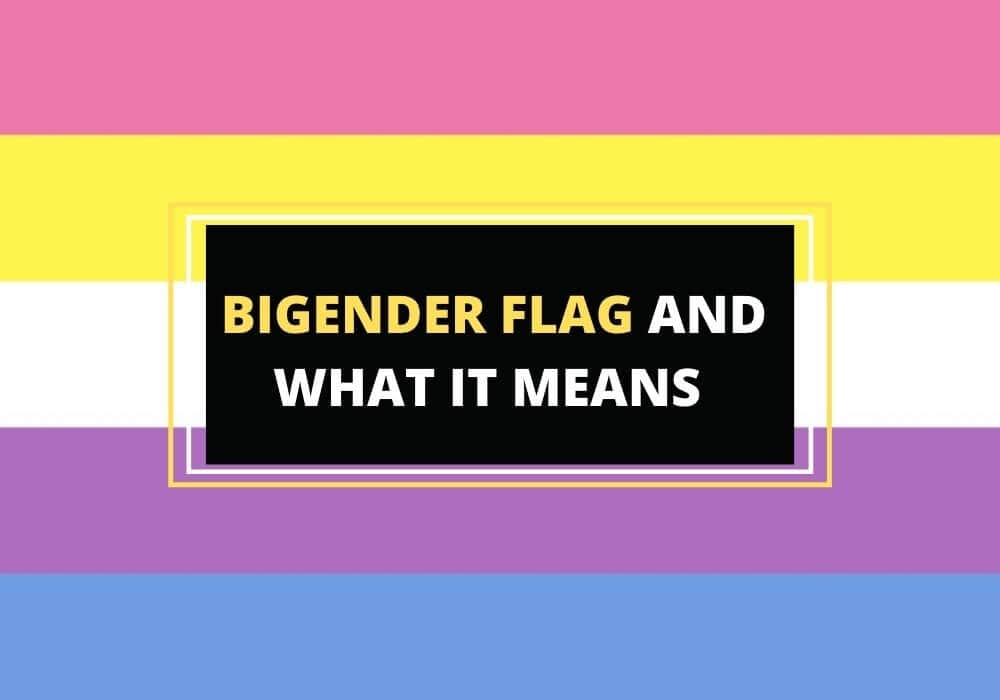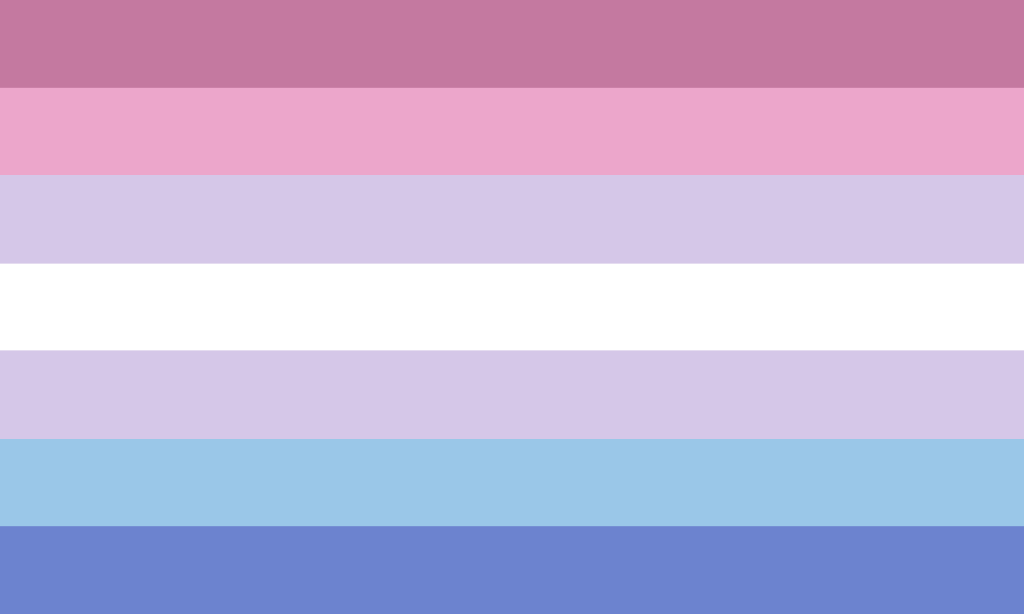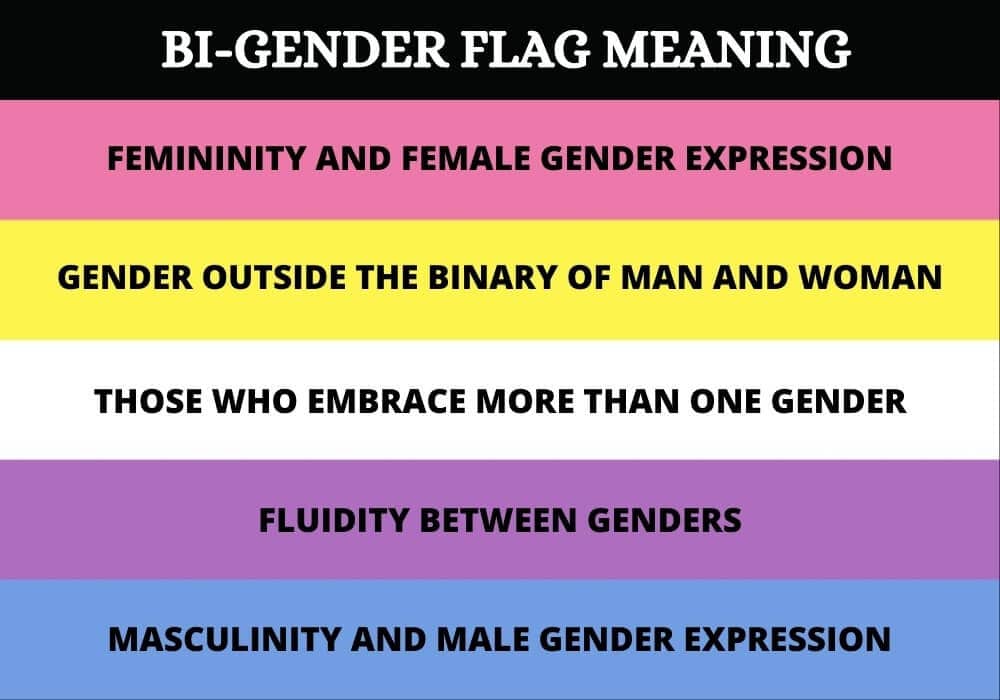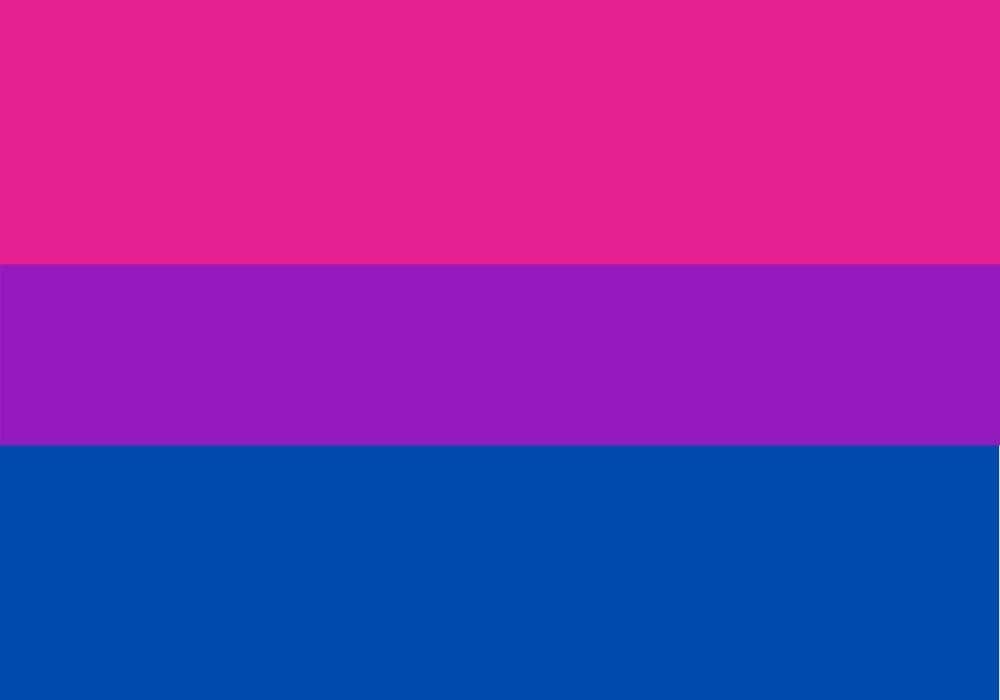
Table of Contents
At the center of the LGBTQ+ community, the bigender flag stands out, telling a story as vivid as its colors. This flag represents people who identify with two genders, moving past traditional gender norms. It symbolizes not just diversity, but a strong message of acceptance. Let’s explore the rich symbolism of the bigender flag and its significance in today’s world
What Does It Mean to Be Bi-Gender?
Being bigender means a person identifies with two different gender identities. These identities can be male and female, or they might include non-binary, genderqueer, or other identities. A bigender person might feel like they are both genders at the same time, or they might switch between these genders. This is a very personal experience and can be different for each person.
Bigender challenges the usual idea that gender is only male or female. It shows that gender can change and covers a wide range. Bigender people express their gender in different ways, maybe through their clothes, the pronouns they use, or in other ways. But it’s important to remember that the way someone shows their gender doesn’t always tell you what their gender identity is.
It’s important to understand and respect bigender people so that we can create a welcoming space for everyone. This means accepting that their experience with gender is real and adds to the variety of ways people understand gender. Bigender people, like all people, want to be accepted and respected for who they are.
The Official Bigender Flag

The bigender flag visually represents the bigender experience through specific colors, each having a special meaning. Pink stands for femininity, showing the female part of bigender identity, while blue represents masculinity, indicating the male part. Lavender or purple, a mix of blue and pink, symbolizes androgyny, combining masculine and feminine traits.
The white stripe in the flag is particularly important. It shows that bigender individuals may shift between two gender identities, highlighting gender fluidity within the bigender experience. This stripe reminds us that gender can change and evolve, reflecting the unique path of those who identify with two genders. The bigender flag not only celebrates dual identity but also recognizes the complexity and changeability of being bigender.
Origin and History of the Bigender Flag
The bigender flag’s origin is a bit mysterious, much like many symbols in the LGBTQ+ community. This is mainly because people in the community themselves created and adopted it. The idea for a bigender flag came up to represent people who identify with two different gender identities, such as male and female, or other combinations like non-binary or genderqueer. The bigender community wanted a flag that truly showed their unique gender experiences.
The most known bigender flag has pink and blue stripes for female and male identities and a purple stripe that mixes these two. While no one knows exactly when this flag first appeared, it likely came about in the early 2010s. This time was important for recognizing different gender identities in the LGBTQ+ community, and many new flags started to appear.
The bigender flag is more than just a piece of colored cloth. It stands for the wide range and changing nature of gender. It helps remind people that bigender individuals exist and are valid, and it helps build a sense of community. As more people understand and accept different gender identities, the bigender flag remains a symbol of the ongoing efforts to be inclusive and understanding in society.
Why is the Old Bigender Flag Controversial?
The original bigender flag, meant to represent people with two gender identities, has sparked controversy in the LGBTQ+ community. This controversy reflects wider discussions about how to represent identities.
The flag uses specific colors: pink for femininity, blue for masculinity, and a blend for the mix of these genders. However, some in the bigender community argue that this flag oversimplifies bigender identity. They say it sticks too closely to traditional gender colors and overlooks non-binary and genderqueer identities that don’t fit this binary.
Another part of the controversy is about who gets to decide what symbols represent different gender identities. In the LGBTQ+ community, symbols often develop naturally, without everyone agreeing on them. This leads to different views on whether these symbols are appropriate or inclusive.
The debate around the bigender flag shows how hard it is to make symbols that capture the wide range of experiences in a community as diverse as the bigender community. This situation highlights the importance of continuous discussion and understanding as our views on gender identity and expression evolve.
Other Known Bigender Flags
A few years back, there were accusations flying around that the original creator of the ‘official’ bigender flag showed signs of being transphobic and predatory. Thus, many members of the bigender community felt uncomfortable associating with the original bigender flag.
There have been many attempts across the years to conceptualize a brand-new bigender flag – one that’s free from the questionable reputation of its designer.
Here are some of the most recognizable bigender flags that have emerged in recent years:
1. Five-Striped Bigender Flag

Aside from the fact that it was uploaded on Deviantart by an account called ‘Pride-Flags,’ not much is known about the five-striped bigender flag, except that it carries some of the most prominent colors associated with Pride.
Each color on the bigender flag has a special meaning linked to gender identity and expression. Pink represents femininity and female gender expression, showing one side of bigender identity. Blue stands for masculinity and male gender expression, acknowledging the other traditional gender role.
Yellow is important as it symbolizes genders outside the traditional male and female binary, including non-binary identities. White signifies individuals who identify with more than one gender, which is central to bigender identity.
Purple suggests the movement between genders, pointing out the changing and often flexible nature of gender identity in the bigender community. Together, these colors offer a full picture of the varied experiences and identities found within the bigender spectrum.
2. Six-Striped Bigender Flag
The same ‘Pride-Flags’ Deviantart user designed another bigender flag, which is composed of the same colors as the five-striped bigender flag, with the sole addition of a black stripe, presumably to represent asexuality, which, of course, a bigender can identify with as one of their two distinct genders.
3. Bisexual Flag-Inspired Bigender Flag

In 2016, bigender blogger Asteri Sympan created and shared her own design of the bigender flag. This design stands out from others because it adds new elements to the traditional striped pattern of the bigender flag.
The flag features three colored stripes in the background: muted pink, deep purple, and bright blue. Sympan drew inspiration from the bisexual pride flag designed by Michael Page in 1998. In Page’s design, pink represents sexual attraction to the same sex, blue symbolizes attraction to the opposite sex, and purple indicates attraction to both sexes.
Sympan’s flag also includes two triangles in the foreground, one magenta and the other black. The magenta triangle is positioned to the left, slightly above and behind the black triangle. These triangles have deep historical significance in the LGBT community.
They were originally used in Nazi concentration camps to mark people persecuted for their gender or sexual orientation. The LGBT community now uses these triangles on Pride flags and other symbols to reclaim this part of their history, turning a symbol of oppression into one of empowerment and resilience.
The Bigender Flag in LGBTQ+ Community and Pride Events
The bigender flag holds an important place in the broader LGBTQ+ community, especially in increasing visibility and awareness for bigender individuals. At pride events, this flag is often seen with other LGBTQ+ flags. It helps educate people about bigender individuals’ lives and identities.
The flag’s unique colors and design are easy to recognize, which helps bigender people feel a sense of identity and belonging. It also shows inclusivity, reminding everyone at these events that the LGBTQ+ community includes a wide variety of identities, not just the most well-known ones.
When the LGBTQ+ community displays the bigender flag at events, it recognizes and celebrates bigender people’s uniqueness. This makes the environment more inclusive and understanding for everyone in the community.
Future of the Bigender Flag
As society becomes more inclusive and understands diverse gender identities better, the future looks bright for symbols like the bigender flag. Right now, this flag shows the experience of having two gender identities. But as we learn more about gender, the flag might change.
It could get new designs or colors to show a wider range of bigender experiences, not just those fitting the traditional gender binary. The flag might also get more attention in the media and public areas, helping to educate people and support bigender individuals.
Like the rainbow flag has done for the LGBTQ+ community, the bigender flag could become a key symbol for acceptance and visibility. In short, as our ideas about gender grow and change, symbols like the bigender flag will likely change too, to better represent the people they stand for.
Wrapping Up
Official or not, these bigender flags are prized in the community for their role in raising awareness and visibility for an otherwise under-recognized identity group.





